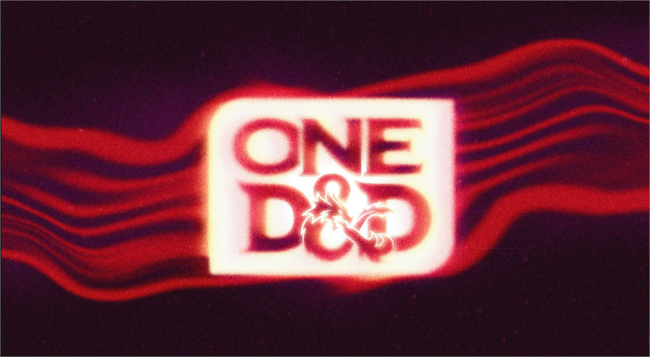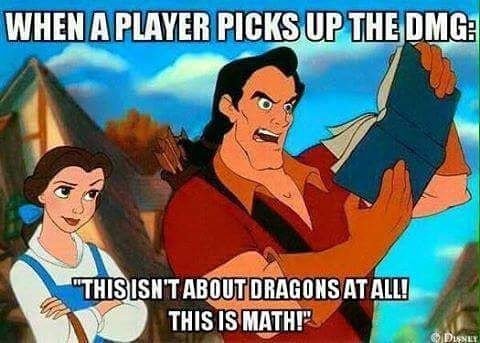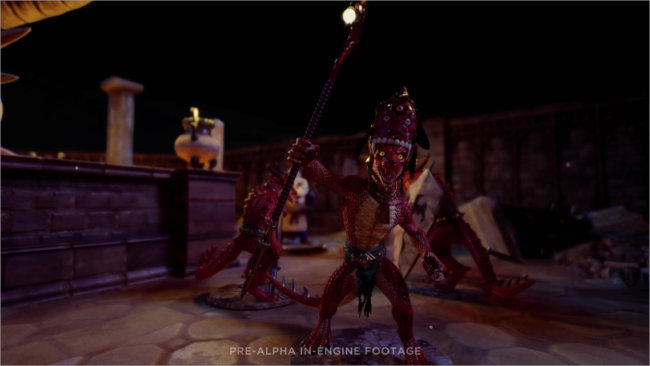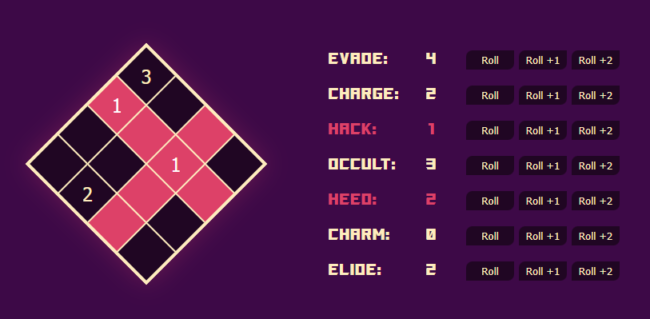UA 2022 Character Origins is the first of the “OneD&D” playtest docs. My reactions to reading through the doc it fall into three categories (not exclusive):
1. Huh. Not a bad idea.
2. Ugh. That is a bad idea.
3. Yeah, this is 5.5e.
So … let’s take a look.

1. Huh. Not a Bad Idea
Simplifying Tool Proficiency and tool kits: This has always felt a bit fussy in 5e to me, to the extent that most folk I know engaged in these a little as possible. Sure, it’s unrealistic, but it smooths a bumpy area.
Orcs as Player Characters: I’m okay with that. I mean, at some point the number of intelligent races in the world starts to get a bit ridiculous, esp. if they can now all interbreed, but, hey, whatevs.
Making Backgrounds more important: I think that makes a lot of sense. I like getting a Feat out of it, at least. And getting a Language (with suggestions) makes some sense. Except … shifting the Ability bumps to this seems a bit weird, at least 3 points worth.
Level-associated Feats: Probably a good idea. While it begin to smack of feat trees from 3.5e, it does mean that trying to make Feats all fit the same level of power can be given more nuance. At the very least, it shakes up all of those “These are the best Feats to take” articles, but represents another awkward moment for backwards compatibility.
Natural 20s: I don’t think it was necessary to make nat 20s and nat 1s auto-successes/failures for everything (I know people have said it was a common house rule, but it wasn’t at our house). But it’s not necessarily a bad thing, either, so fine. (As noted below, I’d be inclined to house rule that a nat 1 gets you Inspiration, rather than a nat 20.)
Having crits only double damage on weapon and unarmed attacks (but not attack spells) is … also okay. It balances Martials vs Spellcasters a bit.
Spell groups: Narrowing the groups of spells (Arcane, Divine, Primal) is a nice bit of efficiency, at least on the face of it.
Grappling: The Grappled condition changes are interesting. I like the Disadvantage for non-Grappler attacks. It’s interesting that they’ve shifted to a Saving Throw with Dex or Str vs the Athletics/Acrobatics skill roll.
Unarmed Strikes: I haven’t done a lot with fisticuffs in the past, but the expansion here (combined with the Tavern Brawler feat) looks like some added detail that will be useful and handy.
2. Ugh. That’s a Bad Idea.
Half-races. “But I don’t wanna be a half-orc or a half-elf. I want to be an Orc-Gnome. I want to be an Ardling-Tiefling. I want to be a Halfling-Ent!” Ugh. I mean, maybe just as well that they came up with a standardized mechanic for it, but it just seems kind of silly to me. It’s not like there’s a shortage of races and demi-races already.
And, of course, that begs the question of quarter-races (“My character has a human-elf hybrid father and an orc-dwarf hybrid mother”), and how to handle them in the rules. “And so, ad infinitum.”
Muddying racial differences. This one is contentious, I know. I am very aware (admittedly from my cis-het-white-male perspective) of the very powerful arguments behind getting rid of race-based Ability Point tweaks. Human history is full of ugliness where different “races” of humans were (and by some still are) assumed to be fundamentally different from “normal,” physically and mentally. Tropes in the game that resonate to that should be examined critically, if not discouraged.
At the same time, it’s one thing to say that Black humans and White humans and Asian humans and whatever pseudo-racial classifications you want to come up with (because we are all, after all, one species) are really the same, and quite another to continuously grind away the differences to say that Dwarves = Humans = Elves. In that case, why bother having those distinctions at all? (“Bob is a sentient who happens to have pointed ears, high cheekbones, and celebrated his 147th birthday last week.”)
Or, as one consders it, why keep the distinctions you are keeping or adding (lifespan, size, appearance, old and new innate abilities) vs. getting rid of the ones you aren’t (stat increases and decreases). Especially since a number of those special innate abilities are just stat bumps in disguise (lookin’ at you, Dwarves).
Or, put another way, nobody seems to have a problem with Vulcans being stronger and smarter than Humans in Star Trek, as long as there are countervailing disadvantages. Why is it wrong for an Elf to be more Dexterous than a Human, or even, given their ages, have a higher Intelligence. I mean, nothing in the old rules actually prevented a Half-Orc from becoming a powerful wizard; it was just a bit more difficult to min-max the stats that way. I don’t necessarily have a problem with that. People can do anything, but the Halfling basketball player is going to have some special, epic challenges.
In short, I’m quite fine with backing away from dictating cultural-biological absolutes (“Orcs are all evil! Evil, evil, evil! And they eat human babies, too!”), even with creatures of demonic origin (the convolutions over Tieflings are fascinating, even if they inadvertently let an actual alignment show up in one of the Lineages). But I’m also okay with saying “The physical differences we’re literally describing here are reflected in the Ability stats of characters of those races.” (Mental stats are a bit more dodgy; I’d be okay with leaving them out of the picture for races.)
Character Sizes: Small (2-4 foot) Humans? Even when we are talking about Pygmies or people with Dwarfism, that’s below average. I don’t object, it just seems an oddly specific call-out. (They also show up as an option only with Humans, Ardlings, and Tieflings; all other races are other Medium or Small only, which seems … racist? What about tall Halflings? What about diminutive Elves?)
Racial Spells: More races have literal spells that they get to use on a dailyish basis (once per Long Rest if you don’t have additional spell slots). That seems to muddy the magic waters some, giving spells to all classes. Especially with Feats that do the same thing. I’m not sure creating a more magic-rich environment is actually needed.
Ubiquitous Inspiration: Inspiration is a mechanic that seems to be quite underutilized in 5e by too many DMs. The “solution” to this in OneD&D is to make it pop up all over the place, robbing it of its RP-supporting intent.
True, it gets lost after a Long Rest now — except for uber-versatile Humans. But PCs get Inspiration from rolling a nat 20 (i.e., after 5% of all rolls). Players can get Inspiration as a group from someone with the Musician Feat. In short, everyone’s going to have and use plenty of Inspiration to gain Advantage on rolls.
That’s not necessarily bad, but I’m not sure it’s good. It certainly waters down the “Wow, that was an awesome bit of character play, so take an Inspiration,” because it increases the chance they already have some.
(Frankly, I’d house-rule-tweak at least one thing there, if nothing else: you gain Inspiration on a nat 1 — anger and determination to do better — rather than on a nat 20! That’s a very non-D&D idea, to be fair.)
Backgrounds and Ability Bumps: Are Acolytes really that much Wiser than the average person? Are Cultists that much more Intelligent? Not in my gameplay experience. I know the Ability Bumps need to somewhere if you can’t baldly do it with races, but allocating 3 points here seems a bit extreme.
Multi-Lingualism: I guess maybe it makes life easier, but everyone knowing three languages (Common, a Standard Language, and a language from your Background) does seem to be a lot of linguistic lore (and, if players cooperate in chargen, allows for covering pretty much all the languages they might need).
Long Rests: These are so baked into the game at present (even if they do ridiculous amounts of healing) that having it be interrupted by any Combat feels like a major shift.

3. Yeah, this is 5.5e.
There is a qualitative difference between characters generated under the present 5e rules, and characters generated under these rules. The two will not mesh well together, and efforts to run both types in any given campaign will lead to madness. If nothing else, automated character sheets and tools will have to choose one or the other (whether from WotC or a third party like Roll20).
By extension, that implies a difficult fit between existing 5e modules and the new system. That’s already true to a degree (just as the Genasi), but will continue to grow over time.
That does not mean the 5.5e changes are, per se, a disaster. There are a lot of good changes in the system already that have evolved it from the baseline 5e of 2014 to where it is today. All those changes in supplemental tomes (Volo’s, Tasha’s, Xanadar’s, Mordenkainen’s, etc.) have changed the game in mostly good ways.
And, to be fair, the changes discussed are not the 3.5 to 4, or 4 to 5, full-edition levels of significance. The basic underlying systems, action economy, etc., are there. But this is more than just “5e Forever, man!”
So why not bite the bullet and admit this is a new (or distinct sub-) edition? If WotC’s plans involve you buying a new set of hardcover books for “OneD&D” (and they do), then why not just call it 5.5e and be done with it? For the sake of marketing?
Because, really-truly, I guarantee that more supplemental books will come out after that. And every 5-10 years they’ll do a true-up of new PHB/DMG/MM tomes, “backwards-compatible” claims or not. If “OneD&D” in 2024 is not comfortably compatible with 5e, what will it be in 2028?
(Which argues the intent to pivot to a new direction and go to all-digital rules that you license on a regular basis. Want access to Xebulon’s Big Bucket o’ Game Mods? That’ll be $2/mo, or $20/year if you want it to plug into your official WotC modules and official WotC character generator. But I digress.)
I’ll continue to read the feedback (which is all over the map), and when 1 September rolls around, I’ll provide my feedback. If 5.5e came out like this, I would suck it up and play with it that way. But I would want WotC to admit this is not a backwards-compatible seamless evolution of 5e, from 2014 or 2022. This is something new that deserves to be recognized as such — and identified as such to WotC’s customers.















